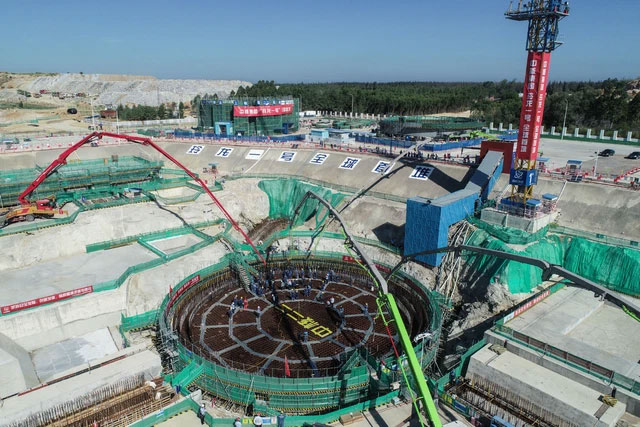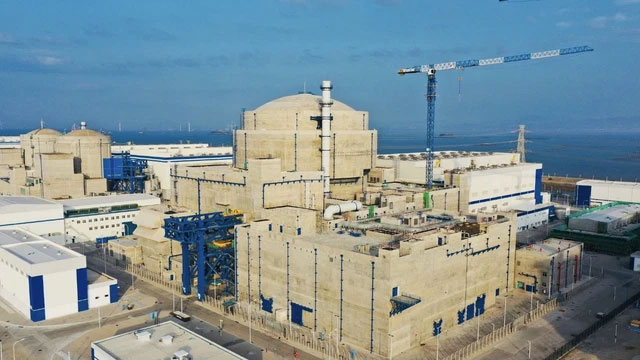China continues to assert its position on the path of nuclear energy technology development: it has successfully connected the first small modular reactor (SMR) to the power grid.
The state-owned electricity producer Huaneng Group has successfully assembled a 200 megawatt reactor at Shidao Bay, which is currently supplying power to the grid in the mountainous province of Shandong. At this moment, Huaneng Group is testing a second reactor, which is planned for installation by mid-next year.
This is a high-temperature reactor that is cooled by gas and uses the world’s first fuel pellet module; it heats helium instead of water to generate energy. The reactor belongs to the fourth generation, designed to automatically shut down in the event of an accident. This feature aims to prevent nuclear disasters similar to the incident that occurred at the Fukushima Daiichi Nuclear Power Plant in Japan.

Small modular reactor SMR on Hainan Island.
Globally, no country is investing in nuclear energy like China. It is expected that in the next decade, the Chinese government will inject a total of $440 billion into this clean energy sector.
The newly connected SMR has a capacity of 200 megawatts, with a size only one-fifth that of the Hualong One reactor, China’s first self-designed and manufactured reactor. Compact, flexible, and full of cost-saving potential, the new reactor has excited experts in the populous nation.
The energy industry is witnessing a strong rise in wind and solar power, both of which require significant land use. This is where the smaller size of nuclear reactors proves effective. Thanks to their relatively small scale and advanced safety mechanisms, SMRs can be deployed in key economic areas or in regions facing energy shortages.

Hualong One reactor.
“SMRs can be cheaper in both construction and operational costs, can be deployed more quickly, and have shorter downtime for refueling compared to traditional nuclear power plants,” noted market analyst Bolor Enkhbaatar.
The World Nuclear Association states that as SMR technology matures, it could be integrated into the combustion chambers of existing coal power plants, transforming one of the world’s largest sources of pollution into a plentiful energy source. However, there is still a long way to go before reaching this point.
For reactors to be cost-effective, their construction speed must be high. Huaneng Group took nearly 10 years to complete the Shidao Bay project, and they have yet to disclose the funding for this advanced reactor.
Regardless, the flow of nuclear energy through Shandong province has shown that the efforts of the Chinese have borne fruit. As they cultivate an “energy orchard,” electricity shortages will no longer be a concern in the future.

















































